Fan control and curves
We already wrote about the temperature range-controlled fans of the EVGA GTX 1080 Ti FTW3 Gaming, although it was interesting to follow the course of all three fans at first. The control measurement with a laser structure also confirmed to us that the values supplied by the speedometer signal are roughly correct. In order not to have to work with three fan curves in the diagram, we have recreated the average speed of all three fans. This is fitting in that the two right fans turned barely 100 rpm faster, even at maximum thermal load.
However, the difference in open and closed gaming is very clear. We also see the reasons in the vertical, unguided airflow output, which, precisely when the card has been installed horizontally, unfortunately gets under the map again to some extent and is sucked in again ("self-sucker"). If the air flow were directed more controlled to the rear (in the built-in state then upwards), the cooler would be significantly more efficient. Experiments with glued air foil on top and bottom were very clear.
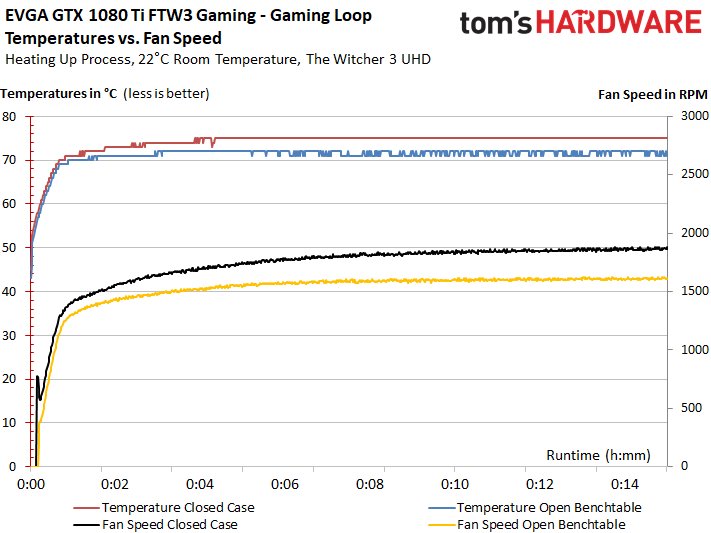
In the Torture loop, the fan curves follow exactly what we described in the infrared images. As the GPU stays cooler, the fans also rotate correspondingly lower.
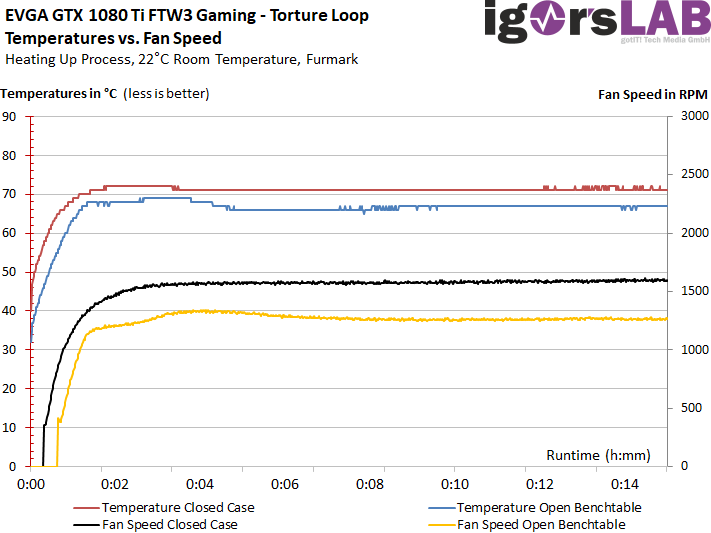
What confused us a bit was an effect that we could only reproduce a few times and which we would sort into the bug category. When cooling, the middle fan stops first. If you then catch the right (actually wrong) moment and put on full load again, the fan remains inactive and the card then heats up to just over 80°C during gaming. Then, in all cases, only a computer restart helped to be able to use the middle fan again.
Noise emission ("volume")
The fact that we measure in a specially furnished chamber ("room-in-room") can also be found in the link on page one during the test setup. We were often asked about the minimum possible level in the room, so we do not want to withhold the control measurement.
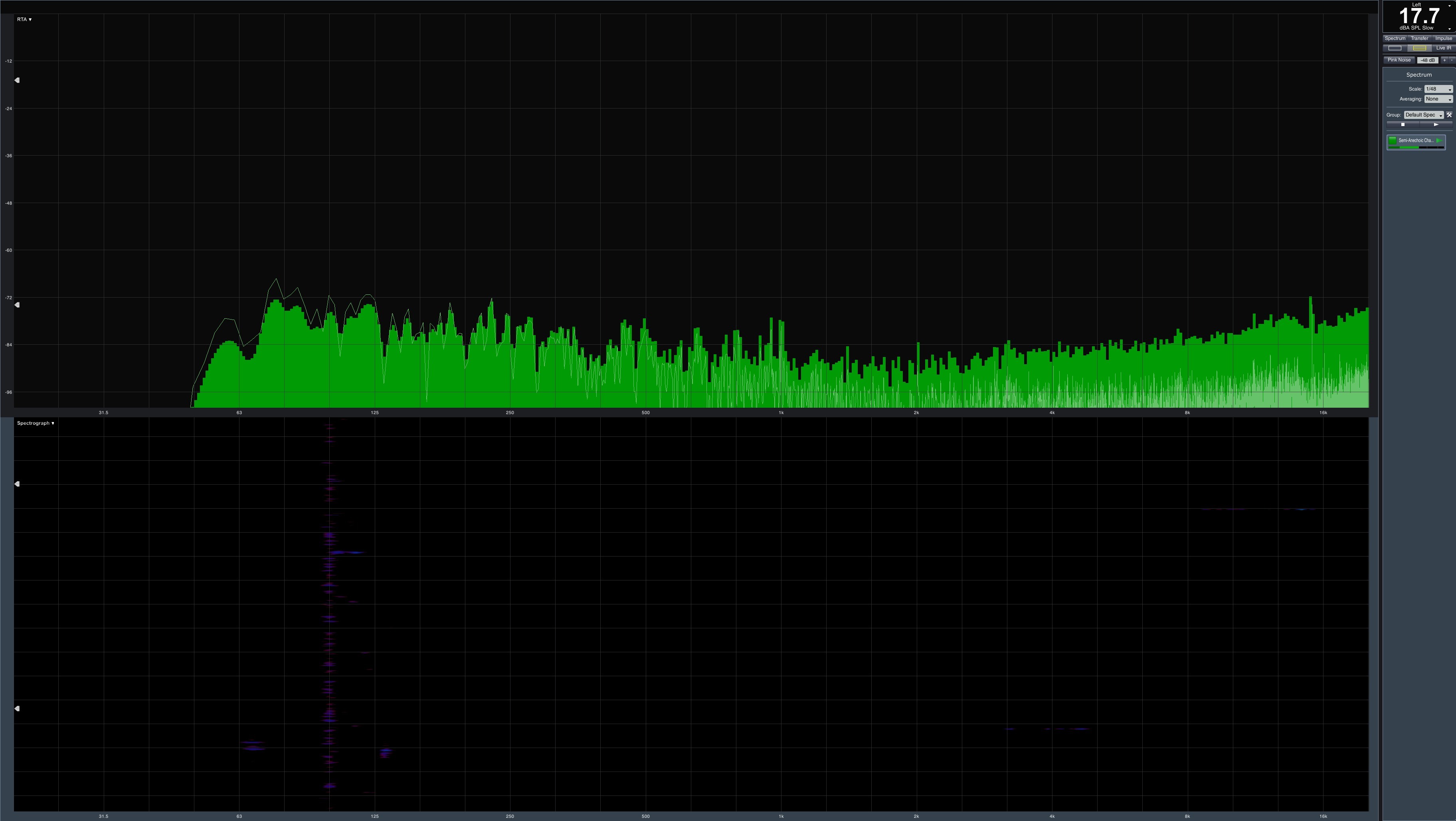
Now let's bring some noise into the silence of the dead and measure what the card does acoustically during the gaming loop. In the open structure we land at a flat three-fan card acceptable just under 41 dB(A), which shows the limits of the flat design, because here the airflow replaces the missing radiator surface.
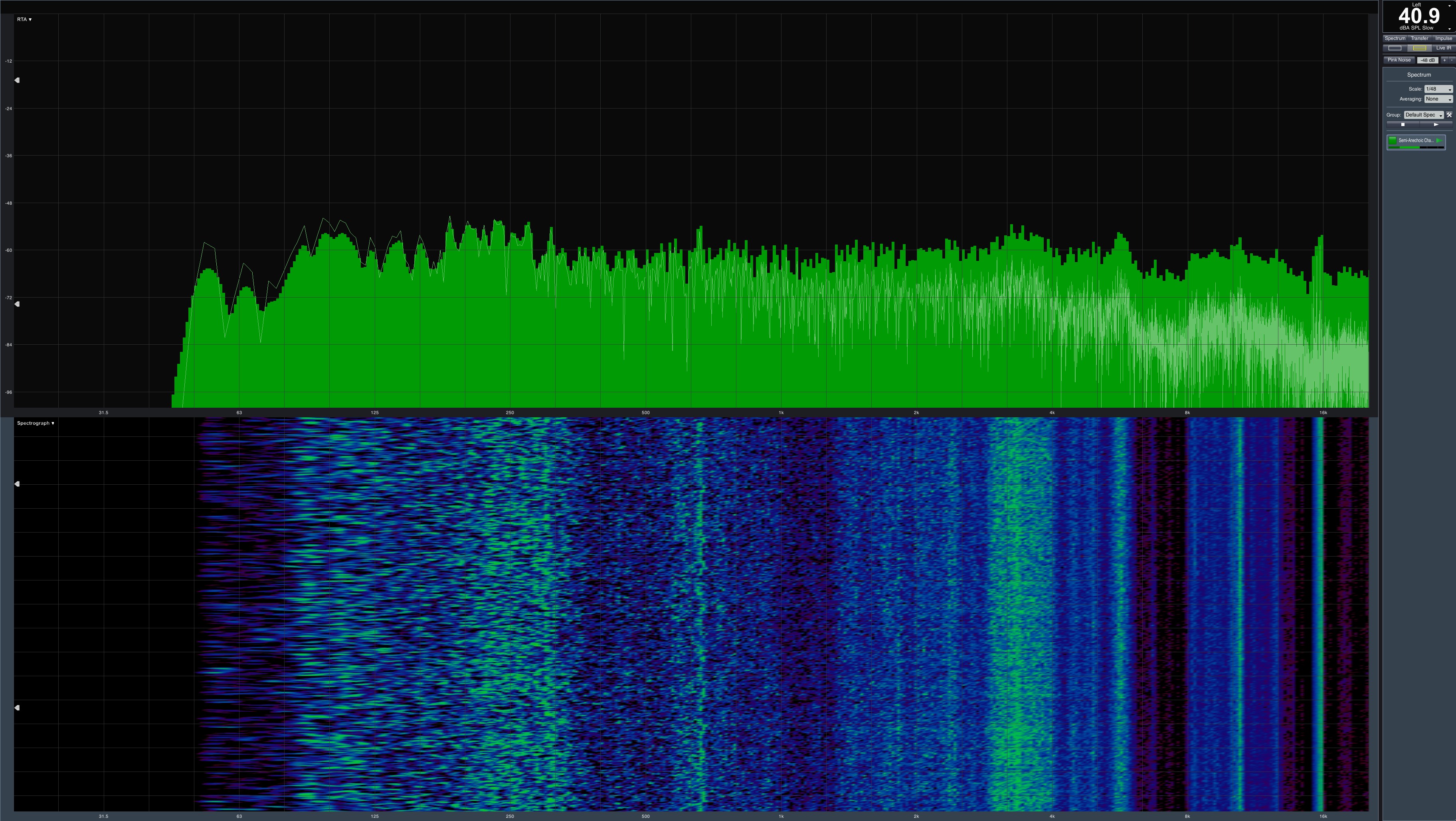
We like the fact that there are almost no low-frequency bearing noises in the sound spectrum, which is rarely the case. The 41 dB(A) are audible, but it is a rather restrained noise and not a wild acoustic chase.
In extreme cases with the Torture Loop and maximum power target of 127%, however, the pure fan noise increases to just under 44 dB(A), whereby the speeds are then roughly the same as for the gaming loop in our closed setup without clock increase, but with the raised power target. That is very the border of what is still so reasonable.
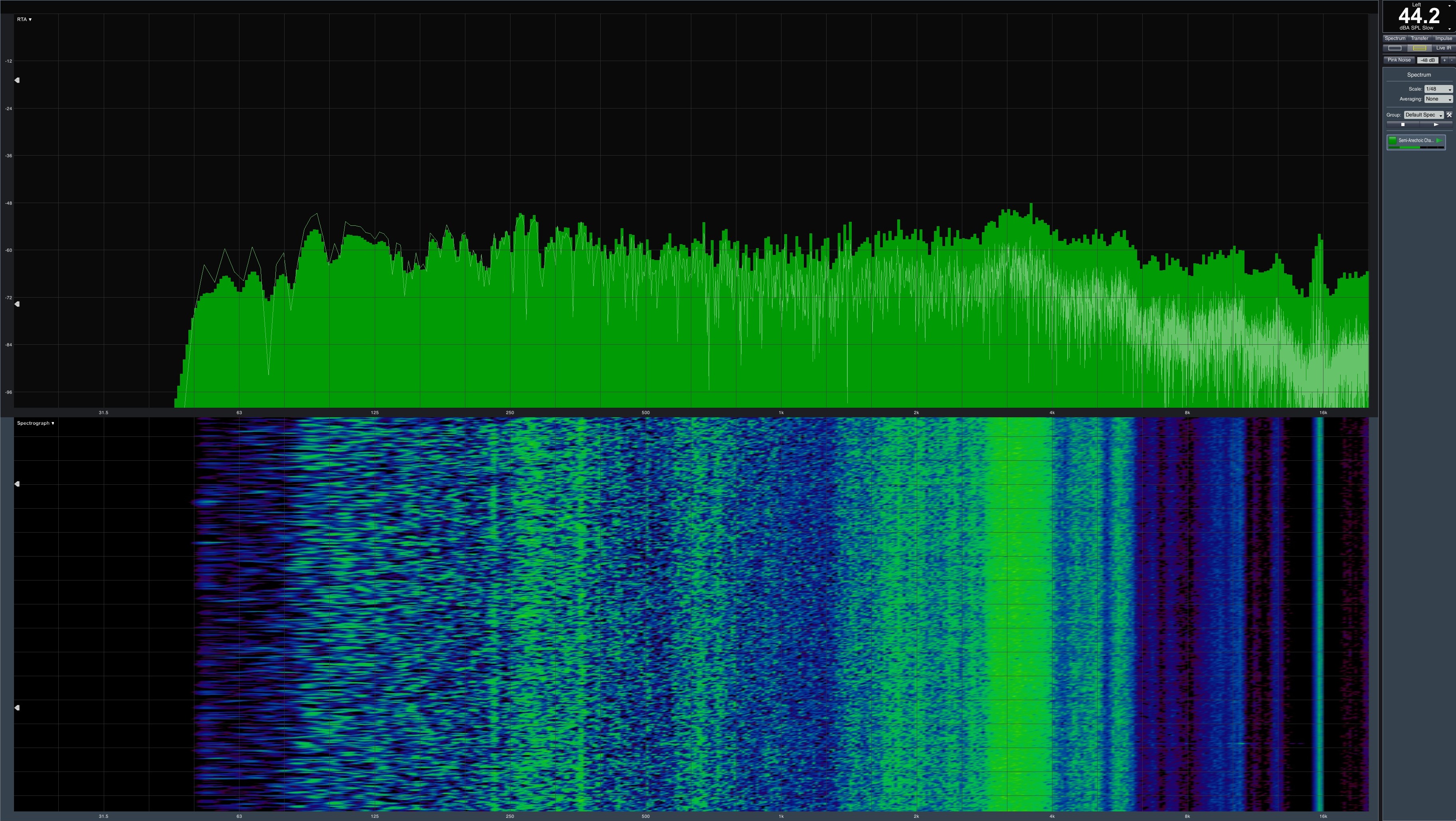
Intermediate conclusion
The card has an acceptable, flat cooler that can safely get the most out of the design-related format. The whole thing is not super-quiet, but still defensible due to the rather neutral sound characteristics. The map becomes quieter in the closed structure, the more space remains between it and the side wall. In addition, an Aiflow from the caseback or below the card more helpful than an uncontrolled air intake from the front of the housing.































Kommentieren